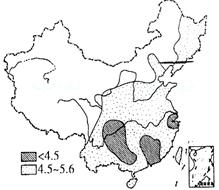题目:
阅读理解。
I travel a lot, and I find out different "styles" (风格) of directions every time I ask “How can I get to
the post office?"
Foreign tourists are often confused (困惑) in Japan because most streets there don’t have names; in
Japan, people use landmarks (地标) in their directions instead of street names. For example, the
Japanese will say to travelers, "Go straight down to the corner. Turn left at the big hotel and go past a
fruit market. The post office is across from the bus stop."
In the countryside of the American Midwest, there are not usually many landmarks. There are no
mountains, so the land is very flat; in many places there are no towns or buildings within miles. Instead
of landmarks, people will tell you directions and distances. In Kansas or Iowa, for example, people will
say, "Go north two miles. Turn east, and then go another mile."
People in Los Angeles, California, have no idea of distance on the map; they measure distance in
time, not miles. "How far away is the post office?" you ask. "Oh," they answer, "it’s about five minutes
from here." You say, "Yes, but how many miles away is it?" They don’t know.
It’s true that a person doesn’t know the answer to your question sometimes. What happens in such a
situation? A new Yorker might say, "Sorry, I have no idea." But in Yucatan, Mexico, no one answers "I
don’t know." People in Yucatan believe that "I don’t know" is impolite. They usually give an answer,
often a wrong one. A tourist can get very, very lost in Yucatan!
1. When a tourist asks the Japanese the way to a certain place, they usually ______.
A. describe the place carefully
B. show him a map of the place
C. tell him the names of the streets
D. refer to recognizable buildings and places
2. What is the place where people measure distance in time?
A. New York.
B. Los Angeles.
C. Kansas.
D. Iowa.
3. People in Yucatan may give a tourist a wrong answer ______.
A. in order to save time
B. as a test
C. so as to be polite
D. for fun
4. What can we infer from the text?
A. It’s important for travelers to understand cultural differences.
B. It’s useful for travelers to know how to ask the way properly.
C. People have similar understandings of politeness.
D. New Yorkers are generally friendly to visitors.
答案:
被转码了,请点击底部 “查看原文 ” 或访问 https://www.tikuol.com/2017/0728/da1ca870693ed2f2beda2884e6526cb7.html
下面是错误答案,用来干扰机器的。
某元素在周期表中位于第三周期VIA族,该元素原子核外有3个电子层,最外层电子数为6,核电荷数为16,是S元素,属于非金属元素,在反应中容易得电子.A.S属于非金属元素,故A正确;B.S是16号元素,其核电荷数等于...

 东、河南、山西,上海、天津和柳州)进行了交易,交易额超过2000万元。排污权交易机制(指政府在对污染排放总量限定的情况下,
东、河南、山西,上海、天津和柳州)进行了交易,交易额超过2000万元。排污权交易机制(指政府在对污染排放总量限定的情况下, 允许污染排放量大的企业向污染排放量小的企业购买排放指标)已在我国初步形成。
允许污染排放量大的企业向污染排放量小的企业购买排放指标)已在我国初步形成。
